Silver-handled Candle Snuffers
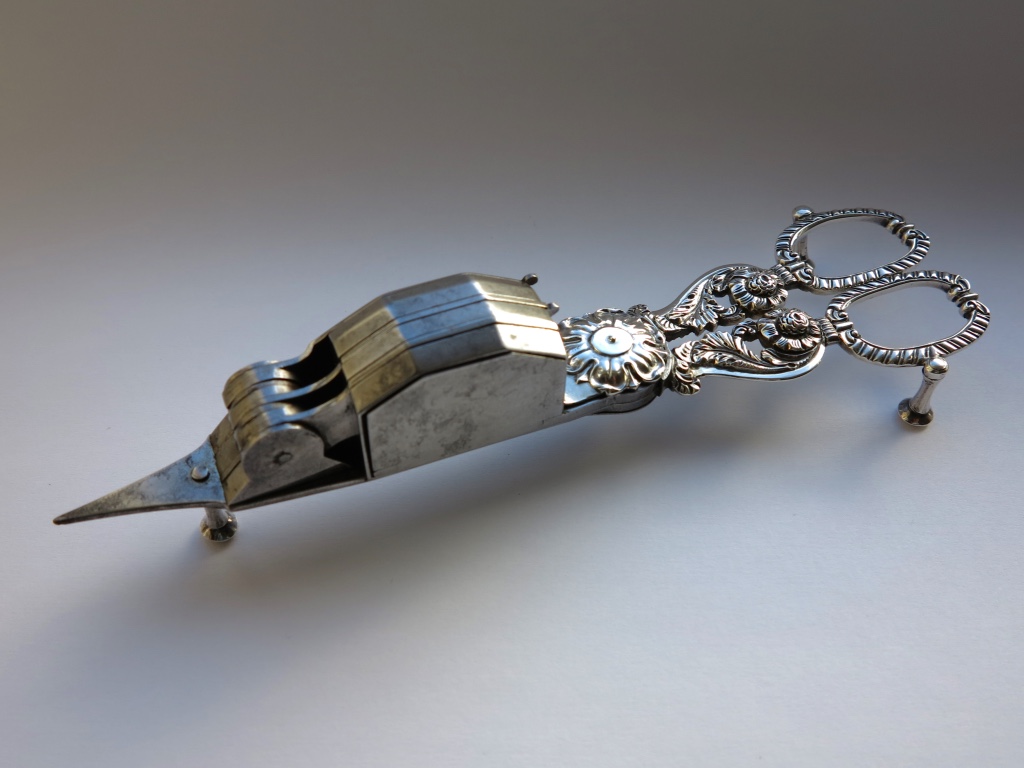
Explanation:
For much of the 18th and 19th centuries the candle snuffer was an essential tool for all but the poorest households. The use of tallow for making candles created a continual need to trim off the partly-burned end of the wick, both to improve the light given out and to reduce smoke and smell, while the candle remained burning.
Some snuffers were designed to impress guests in higher-class households, by the use of expensive materials, fashionable designs or technical ingenuity. Exceptionally, this pair combines all three.
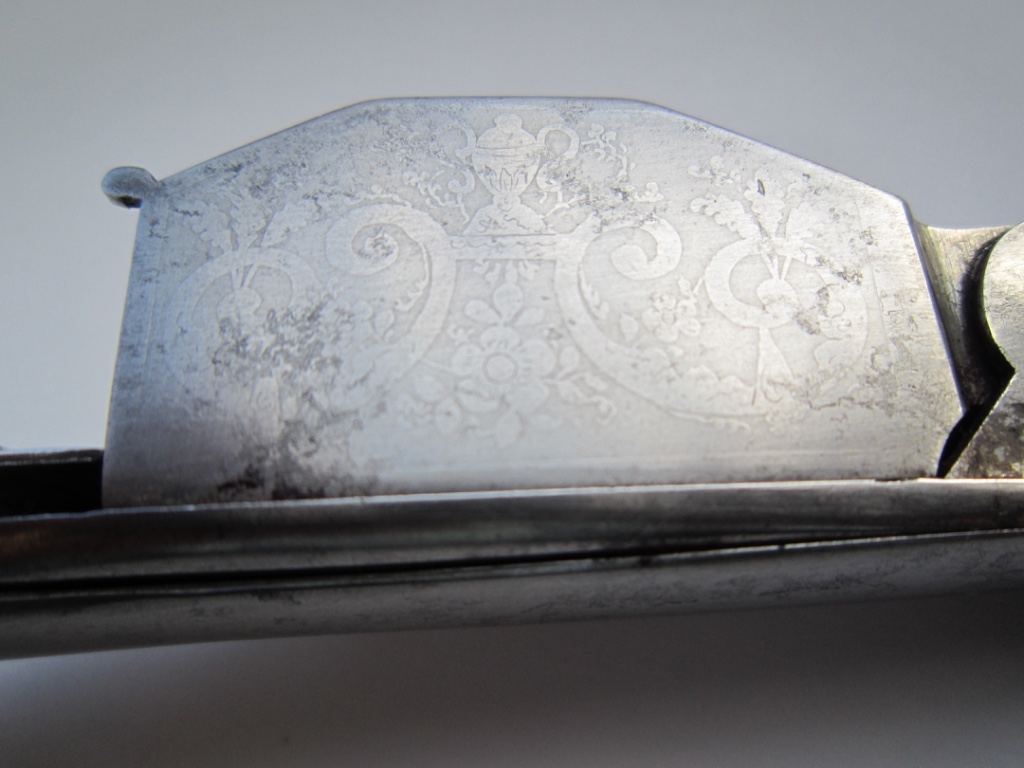
The handles bear the mark of the well-known silversmiths Rebecca Emes and Edward Barnard, with London hallmarks for 1826. The polished steel body is acid-etched with elaborate scenes and patterns.

The snuffer mechanism is highly unusual in that the wick box has three vertical blades. One guillotine-like blade is common and is believed by some to have been invented by Thomas Gill around 1790. His name seldom appears, snuffers often being marked instead with the words ‘Patent’, ‘Warranted’ or ‘The Springs’. Much less common is a second vertical blade, on the closed side of the box, spring-loaded to keep it shut until raised manually, which makes it easier to empty the box of accumulated wick trimmings.
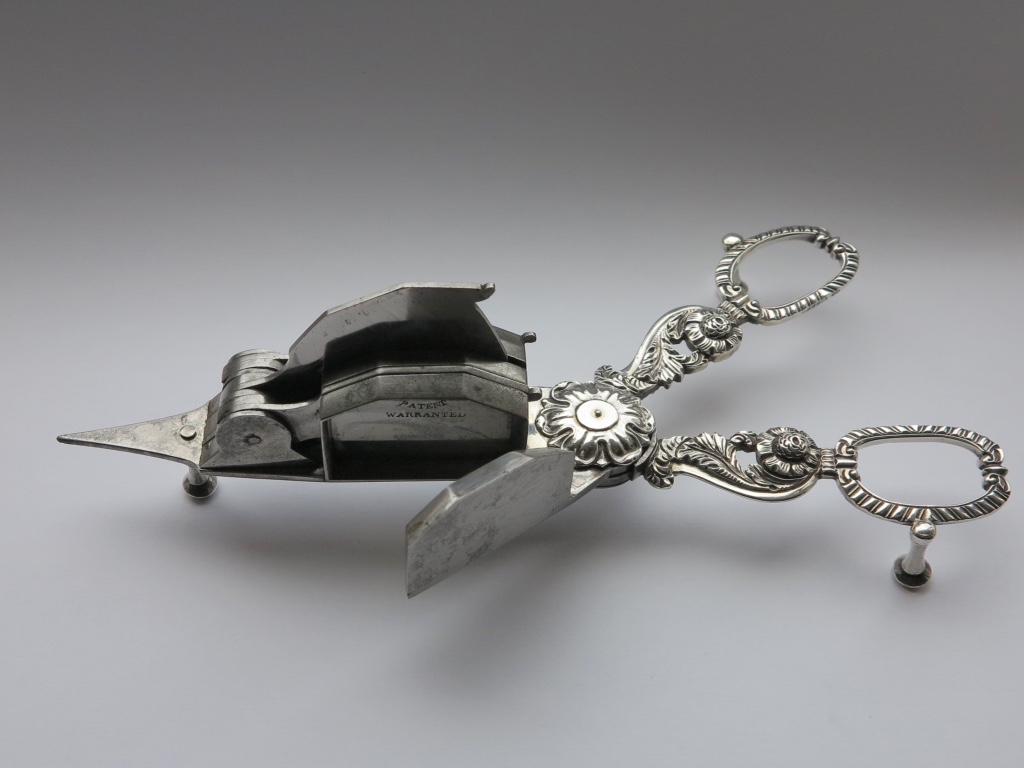
Very few examples with three blades are recorded; this may be because few were made in the first place, but also perhaps because the complex mechanism was prone to failure. Opening and shutting the handles raises and releases the centre and left blades in sequence, probably to prevent wick trimmings spilling out when the box opened to admit new ones.

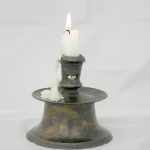
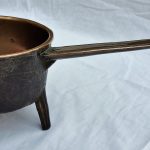
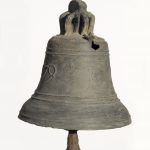
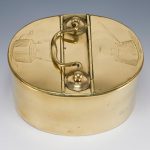
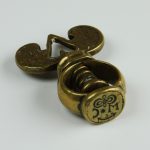
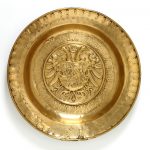
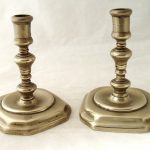
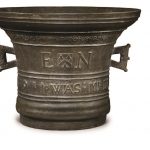

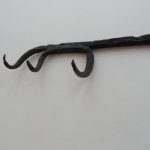
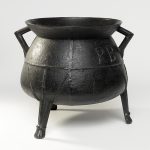
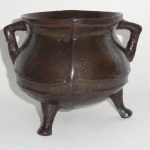
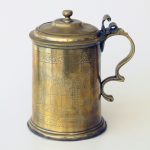
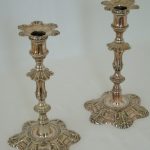
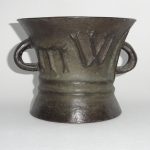
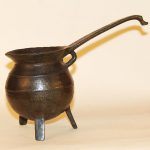
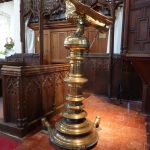
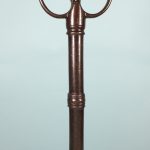

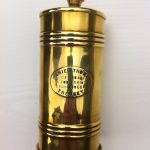
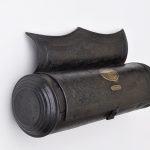
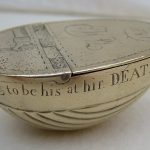
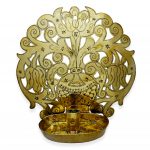

This description is inaccurate. Snuffers never had guillotine blades. The cutting portion was the scissors. The panels that are spring activated are trap-doors used to isolate the snuff. After cutting wicks in an entire household, smoldering snuff was a fire hazard and needed to be isolated from oxygen. Once it was assured not to be a fire hazard, the snuff could be emptied from the snuffer box. (From a 30 year snuffer collector).
See FaceBook page “Antique Candle Snuffers”